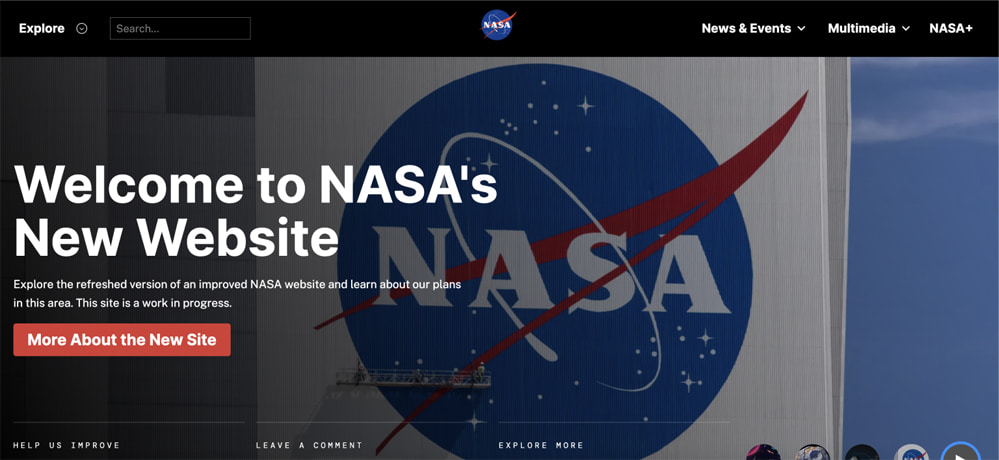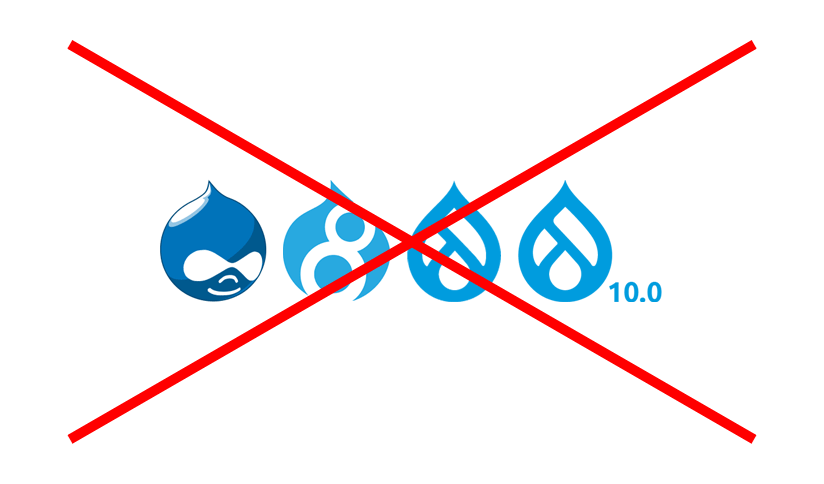Changes are needed every time, and for various reasons. And on the web, things are constantly changing, because the internet is evolving fast.
NASA, the National Aeronautics and Space Administration, is a U.S. agency that "explores the unknown in air and space, innovates for the benefit of humanity, and inspires the world."
Its main website, which can be accessed by visiting nasa.gov, is a governmental website, meaning that it's already significantly influential on its own, just to say the least.
And this time, after a lengthy development, the agency has finally removed the beta label on its website, and revealed that it has ditched the popular content management platform Drupal, in favor of another popular content management website, WordPress.
It took the agency 18 months to migrate all of its data, create a custom web development project, and content building, to this new platform.

NASA has a long history, and for more than a few decades, remain as the few places on the web considered to have valid and legitimate data concerning humanity's knowledge of what lies beyond Earth.
As part of a flagship website, and the source of many other scientific websites, NASA's website is known for showcasing the innovation and discoveries that have defined the agency for more than 65 years.
And its shift from Drupal to WordPress was a multi-million dollar project began a few years prior, when a combination of the IDEA Act and Drupal 7 end-of-life made the team at NASA to rethink and reconsider the CMS they should use, at least for the foreseeable future.
And this is where the agency began its partnership with Lone Rock Point, a WordPress.com VIP Gold Agency Partner.
The team from the two sides began a year of active user experience redesign, and a thorough evaluation of various enterprise CMS’s that would ultimately end up supporting 456 CMS users, 68,698 migrated pages, and 3,023 new landing pages.
And after the process of redesigning and migrating was completed, the who NASA’s website infrastructure was then migrated from an Amazon Web Services environment to WordPress.com VIP.

According to Lone Rock Point President, J.J. Toothman:
"The block based authoring approach of Gutenberg is delivering on that and user testing showed that WordPress could provide that. Now that the site is live, the different types of landing pages being created with block based approach further validates that."
It's said that NASA evaluated both proprietary and open source solutions, and took into consideration over a hundred CMS platforms in the market.
In the end, they narrowed it down to four CMS’s – two were commercial and two were open source (WordPress and Drupal).
And after further consideration, the team completed high level prototyping and user evaluation on all four of the finalists, and concluded that WordPress is the way to go
According to Toothman, there are some factors that set WordPress apart from Drupal. But they main keys include the fact that the learning curve for using WordPress is less steep if compared to Drupal.
WordPress' blog-like approach makes it easier for people with less technical knowledge, to use the platform, whereas users of Drupal need to have quite a bit of experience when using the multi-purpose CMS.
WordPress and its Gutenberg, and the block editor’s flexibility, also played crucial role in NASA's decision to choose WordPress over upgrading its Drupal 7-powered website to Drupal 10.
Because WordPress is an open-source project, NASA wants to give back to the community as part of the roadmap, by open-sourcing some of its custom blocks and some of its other projects.
After all, NASA in using WordPress shows how high its expectation is in using the CMS.
This also also highlights WordPress as a reliable CMS with exemplary adaptability for enterprise-level projects with complex publishing requirements.
"It’s a big win for open source," Toothman said. "There were a number of CMS capabilities that would have been more time consuming to implement without previous work by others in the WordPress community."

“For years, myself and many of us in the WordPress community have been mythbusting the perception from customer stakeholders in 2 areas: (a) WordPress isn’t enterprise. It’s just a blogging platform. (B) WordPress is not a secure CMS,” Toothman said.
“While I don’t expect NASA choosing WordPress to wipe out those pre-existing perceptions, it is further evidence to support the fact that WordPress is enterprise class, and that it can meet security benchmarks.”
It's worth noting though, that Drupal is also a CMS with an extremely large user base, and boasts a massive community.
Drupal also powers a lot of other governmental websites, including the ones from Australia, the UK, the UN, India and more. The White House's website is also powered by Drupal. A number of big media companies also use Drupal as their main CMS.
NASA started using Drupal in 2018, according to a post on Drupal's official website.
